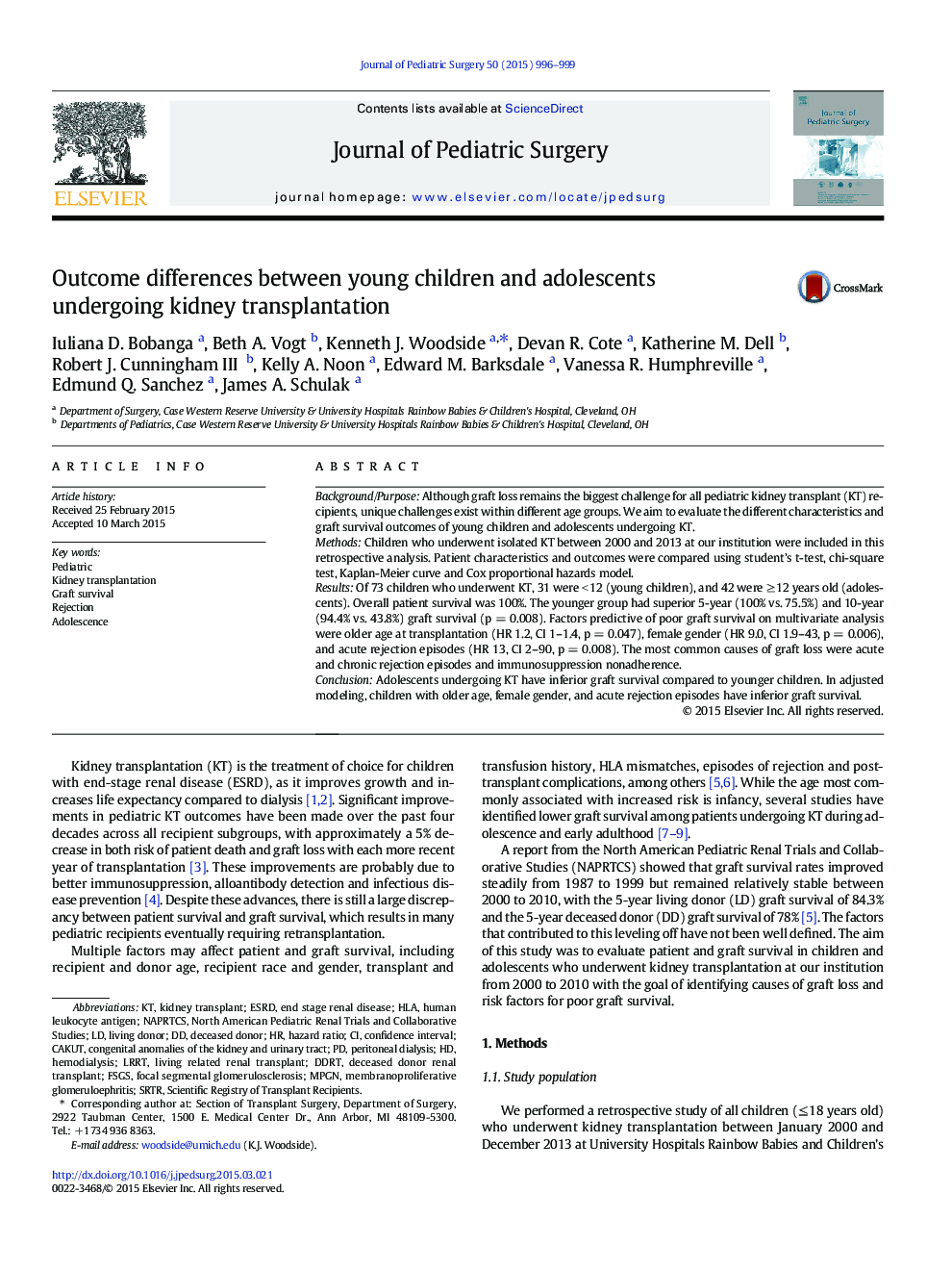| Article ID | Journal | Published Year | Pages | File Type |
|---|---|---|---|---|
| 4155053 | Journal of Pediatric Surgery | 2015 | 4 Pages |
Background/PurposeAlthough graft loss remains the biggest challenge for all pediatric kidney transplant (KT) recipients, unique challenges exist within different age groups. We aim to evaluate the different characteristics and graft survival outcomes of young children and adolescents undergoing KT.MethodsChildren who underwent isolated KT between 2000 and 2013 at our institution were included in this retrospective analysis. Patient characteristics and outcomes were compared using student’s t-test, chi-square test, Kaplan-Meier curve and Cox proportional hazards model.ResultsOf 73 children who underwent KT, 31 were < 12 (young children), and 42 were ≥ 12 years old (adolescents). Overall patient survival was 100%. The younger group had superior 5-year (100% vs. 75.5%) and 10-year (94.4% vs. 43.8%) graft survival (p = 0.008). Factors predictive of poor graft survival on multivariate analysis were older age at transplantation (HR 1.2, CI 1–1.4, p = 0.047), female gender (HR 9.0, CI 1.9–43, p = 0.006), and acute rejection episodes (HR 13, CI 2–90, p = 0.008). The most common causes of graft loss were acute and chronic rejection episodes and immunosuppression nonadherence.ConclusionAdolescents undergoing KT have inferior graft survival compared to younger children. In adjusted modeling, children with older age, female gender, and acute rejection episodes have inferior graft survival.
